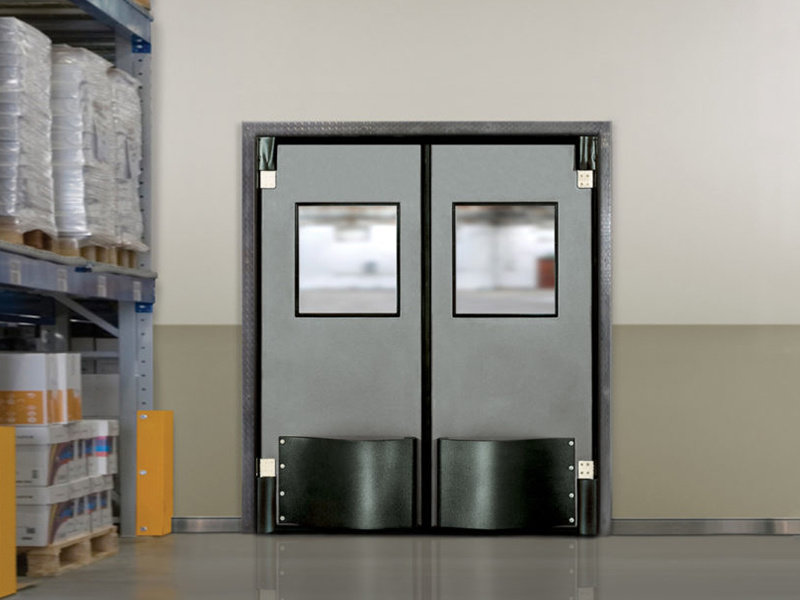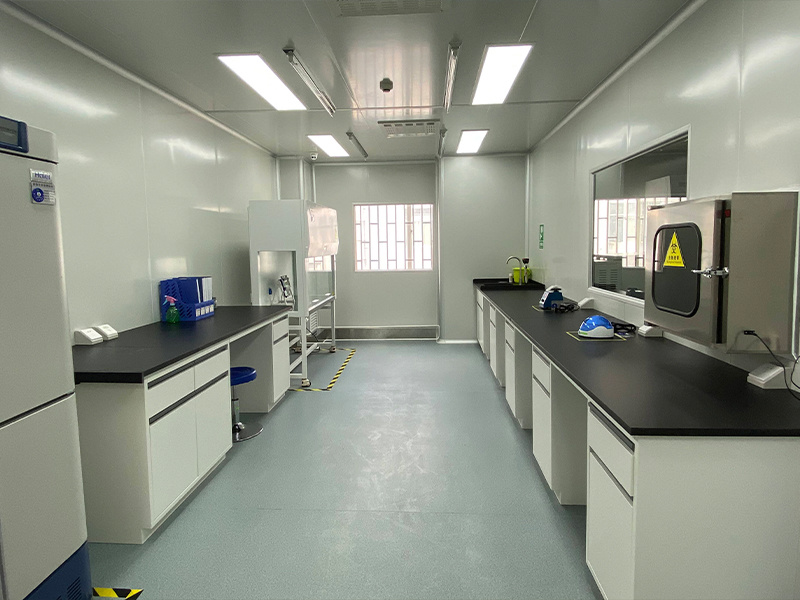Top Features to Look for in a Medical Cleanroom Door
May 03,2025

Top Features to Look for in a Medical Cleanroom Door
In the medical field, maintaining a sterile environment is crucial to patient safety and operational efficiency. One of the key components of a cleanroom is the **cleanroom door**. Choosing the right door for your cleanroom can significantly impact the overall functionality and compliance of your facility. In this article, we will explore the essential features to look for in a medical cleanroom door, equipping you with the knowledge to make an informed decision.
Table of Contents
- Importance of Cleanroom Doors in Healthcare
- Key Features to Look for in a Medical Cleanroom Door
- Material Quality
- Seal Efficiency
- Design and Aesthetics
- Accessibility and Functionality
- Compliance and Certifications
- Maintenance and Durability Considerations
- Cost-Effectiveness of Cleanroom Doors
- Installing Cleanroom Doors: Tips and Best Practices
- Frequently Asked Questions (FAQs)
Importance of Cleanroom Doors in Healthcare
Cleanroom doors serve a vital role in healthcare facilities, particularly in environments like laboratories, pharmaceutical manufacturing, and surgical suites. These doors are designed to prevent contamination and maintain a controlled environment, ensuring that the highest standards of cleanliness are upheld. With the rise of strict regulations and health standards, the significance of selecting the right cleanroom door has never been more paramount.
Key Features to Look for in a Medical Cleanroom Door
When evaluating cleanroom doors, several key features distinguish high-quality options from subpar ones. These features ensure the door meets the specific requirements of a cleanroom environment.
Material Quality
The **material** used in the construction of cleanroom doors directly impacts their performance and longevity. Opt for doors made from non-porous materials such as stainless steel, fiberglass, or aluminum. These materials are resistant to moisture, chemical corrosion, and microbial growth, making them ideal for maintaining sterile environments.
Stainless steel is particularly popular due to its durability and ease of cleaning. Fiberglass doors, on the other hand, offer excellent insulation properties and can be designed to withstand harsh chemical environments.
Seal Efficiency
The **seal** of a cleanroom door is critical in preventing air and particle infiltration. Look for doors equipped with high-quality seals that offer superior performance in maintaining pressure differentials. This is especially important in environments where controlled air pressure is essential, such as in pharmaceutical manufacturing.
High-efficiency seals also help reduce energy costs by minimizing the loss of conditioned air, thereby ensuring that the cleanroom maintains its desired temperature and humidity levels.
Design and Aesthetics
While functionality is paramount, the **design** of a cleanroom door shouldn’t be overlooked. The door should blend seamlessly with the overall aesthetics of the cleanroom environment. This not only enhances the visual appeal but also contributes to a professional atmosphere crucial in healthcare settings.
Moreover, consider doors with smooth surfaces and minimal joints, as they are easier to clean and maintain. Custom-designed doors can also accommodate specific space constraints while ensuring optimal performance.
Accessibility and Functionality
A medical cleanroom door must meet the **accessibility** needs of healthcare professionals while ensuring efficient workflow. Features such as automatic door operators and wide openings facilitate easy access for personnel and equipment, especially when transporting sensitive items or in emergency situations.
Additionally, consider doors with fail-safe mechanisms that allow for manual operation during power outages or system failures. This guarantees that the cleanroom remains operational regardless of circumstances.
Compliance and Certifications
Ensure that the cleanroom door complies with relevant industry standards and regulations. Look for certifications such as ISO 14644, which specifies cleanroom and controlled environment standards. Compliance with these regulations not only ensures a safe environment but also protects your facility from potential legal issues.
When selecting a cleanroom door, verify that it meets the necessary fire safety standards, as this is crucial for safeguarding both personnel and equipment.
Maintenance and Durability Considerations
A cleanroom door should be built to last. Assess the **durability** of the materials and components used in the door’s construction. Frequent maintenance can be costly and time-consuming, so investing in a door that requires minimal upkeep can save substantial resources in the long run.
Choose doors that are resistant to impact and scratches, which are common in busy healthcare environments. Additionally, consider access to replacement parts and warranty options, as these factors contribute to the overall value of your investment.
Cost-Effectiveness of Cleanroom Doors
While it may be tempting to opt for the least expensive option, consider the **cost-effectiveness** of a cleanroom door in terms of long-term investment. Higher-quality materials and advanced features may have a higher upfront cost but can lead to significant savings through reduced maintenance, energy efficiency, and compliance with regulations.
Conduct a thorough cost-benefit analysis to determine which options provide the best return on investment for your specific cleanroom needs.
Installing Cleanroom Doors: Tips and Best Practices
The installation of cleanroom doors should be conducted by skilled professionals to ensure proper sealing and functionality. Here are some best practices to follow:
1. **Conduct a Site Assessment**: Evaluate the specific requirements of your cleanroom environment, including size, airflow, and accessibility.
2. **Follow Manufacturer Guidelines**: Always adhere to the installation guidelines provided by the door manufacturer to ensure optimal performance.
3. **Ensure Proper Sealing**: Pay special attention to the door seals and ensure they are installed correctly to prevent contamination.
4. **Test Functionality**: Once installed, conduct thorough testing of the door's functionality, including automatic operators and manual overrides.
By following these guidelines, you can ensure that your cleanroom doors provide the necessary compliance and performance for your facility.
Frequently Asked Questions (FAQs)
1. What materials are best for medical cleanroom doors?
Stainless steel, fiberglass, and aluminum are highly recommended due to their non-porous nature and resistance to chemicals and contamination.
2. How can I ensure my cleanroom door maintains an effective seal?
Choose doors with high-quality seals and regularly inspect them for wear and damage to ensure they continue to function properly.
3. Are there specific certifications I should look for?
Yes, look for certifications such as ISO 14644, which pertains to cleanroom standards, and ensure compliance with local fire safety regulations.
4. How important is design in cleanroom doors?
Design plays a crucial role in maintaining a professional atmosphere and ensuring easy cleaning. Smooth surfaces and minimal joints are ideal for cleanroom environments.
5. What are the most common features of automatic cleanroom doors?
Common features include motion sensors, fail-safe mechanisms for manual operation, and wide openings for easy access.
Conclusion
Selecting the right medical cleanroom door is an essential step in establishing a safe and compliant healthcare environment. By considering the key features discussed in this article—such as material quality, seal efficiency, design, accessibility, compliance, maintenance, and cost-effectiveness—you can make informed decisions that will benefit your facility in the long run. Investing in high-quality cleanroom doors not only enhances the operational efficiency of your healthcare environment but also ensures the safety and well-being of patients and staff alike.








